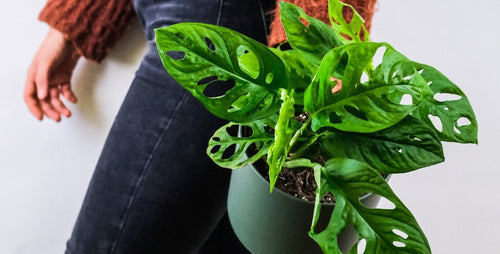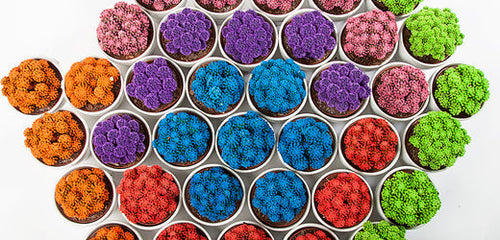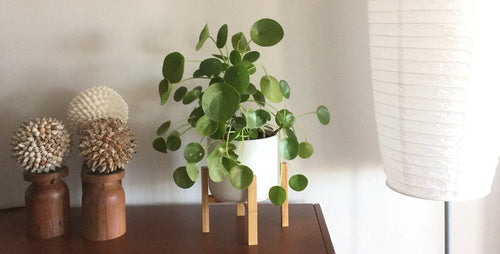
1. Snake Plant
What makes snake plant (also commonly called Sanseveria, mother-in-law’s tongue) one of the best houseplants for beginners is that you can grow it practically anywhere. Have a big, bright window? Great! Have a small, north-facing window? No problem. No window at all, but there’s a light on all day (like my cubicle at my first office job)? Yup—Snake plant will still grow for you. Besides its ability to grow in a range of lighting conditions, it’s also pretty forgiving about watering. In many situations, it may survive as little as once a month (but appreciates more regular watering).
Another quality to love about snake plant is that there are a fair number of varieties available. So if you want to start with a small houseplant, look for a compact selection (Hahnii and Fernwood are two standouts). Or go with a bigger floor plant size, like Zeylanica or Laurentii, which can reach 3 feet tall.
Botanical name: Dracaena

2. ZZ Plant
>When I first showed ZZ plant to a couple of my non-plant-loving friends, they didn’t think it was real. The leaflets are thick and rubbery, making them easy to mistake for plastic. This thickness is one of the qualities that makes it such a great houseplant for beginners. The leaves (and potato-like tuberous roots) store water, helping the plant hold up like a champ if you forget to water for a week or two. I know some people who only water their ZZ plants once a month. It’s about unfussy about light as it is water. It survives in bright, medium, and low-light conditions—including situations like offices or interior bathrooms where there are no windows, but there is a light on all day.
There aren’t many different varieties of ZZ plant around, but one to watch for is Raven®, a selection whose leaves mature to a chic purple-black color.
Botanical name: Zamioculcas

3. Chinese Evergreen
I think the first time I saw a Chinese evergreen was decorating a bench in my hometown mall in Northern Minnesota. That’s a hint how tough this plant is and why it’s one of the best houseplants for beginners. Like most houseplants, it does best in a bright spot (but out of direct sun. It comes from tropical rainforests where it’s always shaded by big trees), but is okay in low light, including windowless offices. Chinese evergreen is forgiving if you forget to water it, and in fact would rather be kept too dry than too wet.
Another fantastic quality about Chinese evergreen, and the reason I’ve given it as housewarming gift to friends who have never owned a plant, is what a wide variety of colors and textures it comes in. If you like a “traditional” look, you can get varieties that have green leaves variegated with silver. If you want something bolder, watch for colorful selections like Ultra Pink, which has reddish pink leaves edged in green. Another favorite is Lemon Pie, which shows off chartreuse foliage streaked with dark green. It's perfect for brightening a dim corner.
Botanical name: Aglaonema

4. Ponytail Palm
Most of the other houseplants I recommend for beginners are lush, leafy plants. Ponytail palm stands out from the pack because it’s a tree. Native to Mexico, it sports a thick trunk, even when young, and long narrow leaves that remind me of a green hula skirt. Because it comes from the deserts of Mexico, inconsistent watering isn’t a problem for this guy. Its trunk has a purpose other than being purely decorative: It acts as a reservoir to store moisture for when the plant needs it.
Give ponytail palm a bright spot for best effect, but this beauty will tolerate medium and lower light, as well. It won’t grow as much or as fast, and this is one of the slowest-growing houseplants to begin with. Wondering how big it is since I mentioned it’s a tree? Most of the time it’s sold as a younger plant you can display on desks, tabletops, or windowsills. Over the years, it can grow into a stately floor plant that can reach some 3 feet tall.
Botanical name: Beaucarnea

5. Pothos
>A delightful vining or trailing houseplant that has heart-shaped variegated foliage, pothos earned one of its nicknames—devil’s ivy—because it climbs like an ivy but practically in the dark. The fact that you can enjoy it in any room of your home or office makes it a top pick if you’re a beginner. It also holds up fairly well if you don’t water it regularly (though not as well as the other plants on my list). It does best if you water it as the top half or so of the potting mix dries to the touch.
There are a handful of different pothos varieties available. The most widely available is golden pothos, which features green leaves with cream and gold streaks. Marble Queen is a classic that has leaves liberally splashed with cream. And Global Green is a newer selection that offers green leaves variegated with irregular darker edges.
Botanical name: Epipremnum
Get tips for keeping your new houseplants happy: Houseplant Care Basics.
Written by Justin Hancock
















